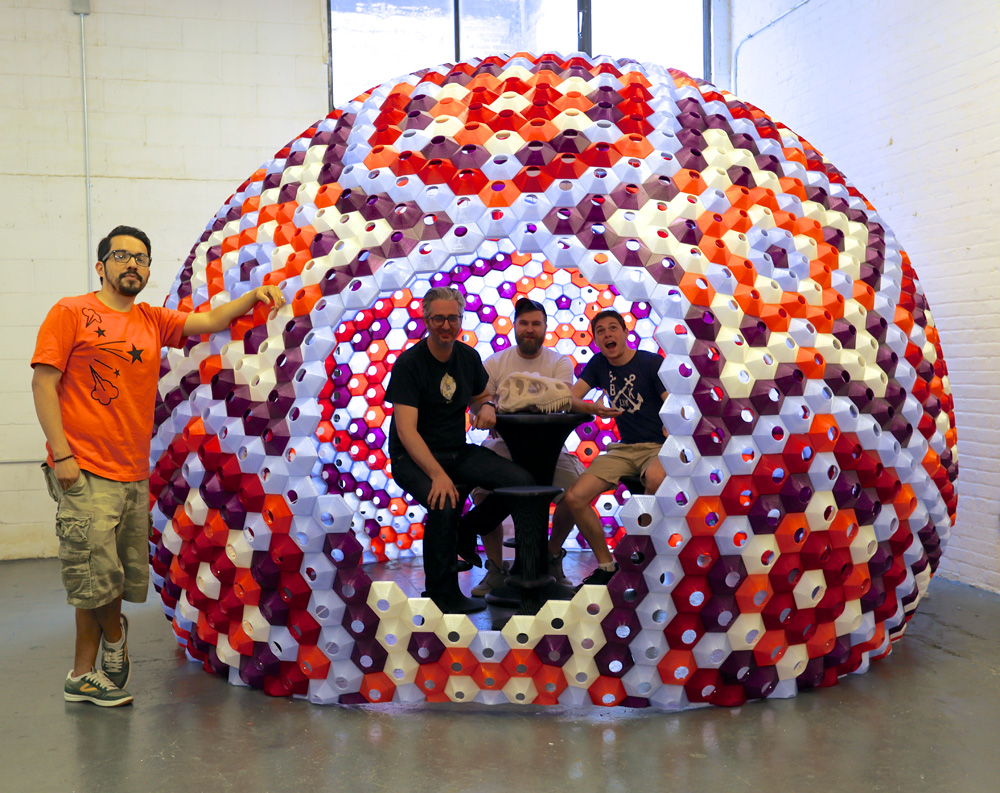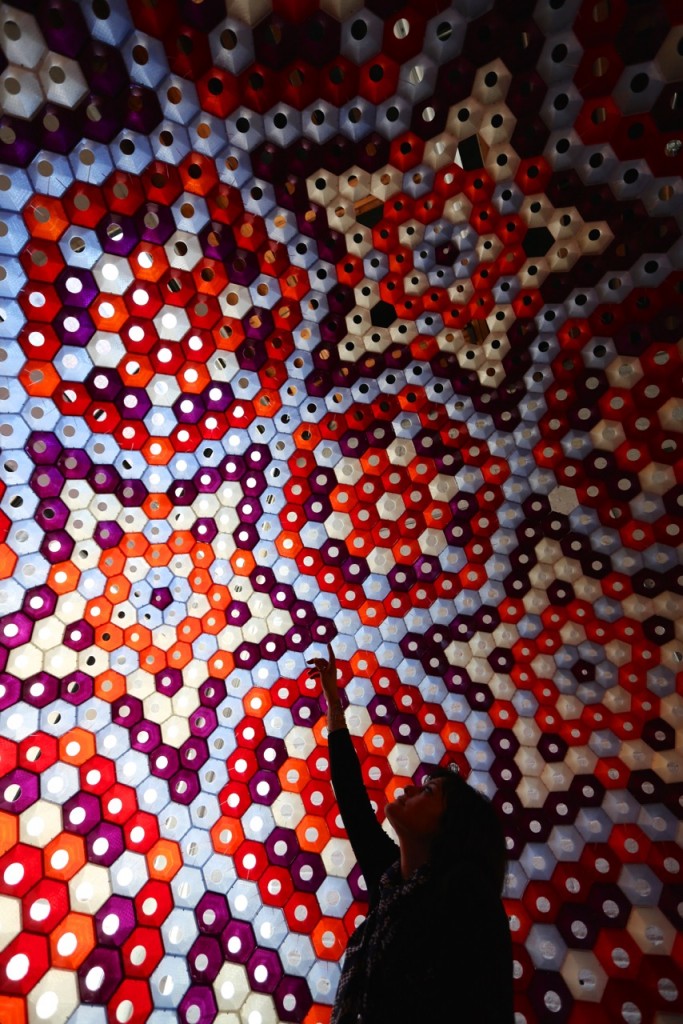Emerging Objects‘ unique position in the world of 3D printing is due to the fact that the Oakland, CA, based studio, led by Ronald Rael, Virginia San Fratello and Mona Ghandi, has been leading in the development of a fascinating modular approach to architecture, along with it ongoing in-depth research on 3D printing materials and processes.
After working intensely with 3D Systems’ binder jetting technology and powder based materials, they have now shown that their work is entirely process and material “agnostic”. For their latest Star Lounge project they used MakerBot 3D printers and PLA filament to create a walk-in structure, which is possibly the largest of its kind ever build using the biodegradable thermoplastic.
The new Star Lounge is the result of a collaboration with Bold Machines, the Innovation Workshop at Stratasys, created by MakerBot founder Bre Pettis, along with Robert Steiner, Elizabeth Randel, Nathan Worth, and Geo Salas. The project was intended to demonstrate the architectural potential of 3D printing, particularly using the small MakerBot Replicator 2 Desktop 3D printer. Emerging Objects’ modular approach is particularly fit for this objective as it is based on 3D printers farms, which can work together to print many small components used to build large, custom structures.
The freestanding structure is 8.5 feet tall with a footprint that measures approximately 11 feet by 11 feet. It is composed of 2073 hexagonal blocks printed in various translucent colors that correspond to a particular block type. This way the team was able simplify the construction process and create beautiful and logical pattern of stars and hexagons that form the 21 larger panels which were then riveted together.
“The ability to create lightweight structures with affordable desktop printers is a game changer for making architecture and interiors,” said Emerging Objects co-Founder, Virginia San Fratello. “The range of colors and their translucent properties create beautiful effects.”
Using a ‘BotFarm’ of over 100 MakerBot Replicator 3D printers, the team at Bold Machines was able to create a structure that maximized the efficiency of the print time and the print volume. Each machine involved was able to 3D print 2 blocks, without the need for support material, in just over an hour. In total there are 28 different block types making up the doubly curved dome structure and each block has a number printed on the interior surface to locate the block in the assembly.
“This project really pushed the limits of 3D printing and showed what is possible when a team has the desire to push a design to the limit,” Bre Pettis, co-founder and former CEO of MakerBot Industries, commented. The overall assembled structure, which creates a decorative pattern reminiscent both of traditional American quilts and Islamic geometric motifs, also demonstrates that prefabricating 3D printed panels for architectural assembly is feasible. As Ronald explained to me in a past interview, this will open the door to creating 3D printed environments, walls, ceilings, partitions and cladding in building construction. And the modular constructions are rapidly getting larger, smarter and, now, a lot more colorful too.






